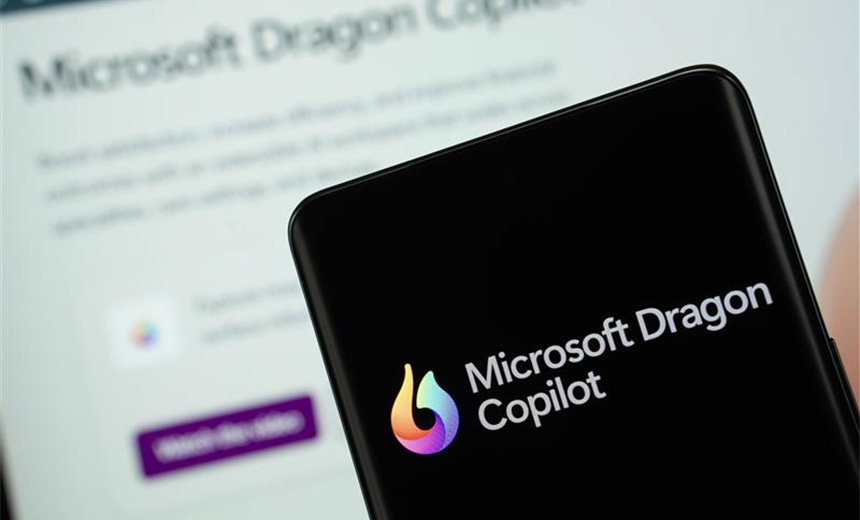Artificial Intelligence & Machine Learning
,
Healthcare
,
Industry Specific
AI Tool Streamlines Clinical Workflows at WellSpan With Microsoft’s Dragon Copilot

Administrative overload is a critical concern in the healthcare sector. Dr. R. Hal Baker, senior vice president and chief digital and information officer at WellSpan, witnessed this firsthand in the busy corridors of WellSpan Health hospitals in Pennsylvania, where clinicians juggle patient care with insurmountable paperwork, including notes, referrals and summaries. Baker found a solution to this growing challenge: Microsoft Dragon Copilot. This AI assistant reduces clinicians’ workload by blending voice dictation, ambient listening and generative AI into a seamless tool for clinical workflows.
See Also: Maximizing data utility in mission delivery, citizen services, and education
Dragon Copilot is more than just a tool for Baker. “We’re not only enhancing our workflows in the EHR,” he said, “we’re harnessing an entire ecosystem that provides AI assistance for a consistent, intelligent experience across all our work environments.”
Microsoft acquired Nuance Communications in 2021 for $16 billion. Nuance, a pioneer in speech recognition, had established a strong presence in healthcare with tools – including Dragon Medical One, or DMO – which clinicians used to dictate billions of patient records. The acquisition represented a strategic bet for Microsoft on voice-driven AI as the future of healthcare efficiency.
Launched recently, Dragon Copilot combines DMO’s dictation technology with DAX Copilot’s ambient listening – which processed more than 3 million patient conversations last month across 600 organizations – and integrates fine-tuned gen AI capabilities.
Built within Microsoft Cloud for healthcare, Dragon is available across mobile, desktop and browser, integrating smoothly with electronic health records.
The need for such innovation is clear. American Medical Association says burnout rates in the U.S. dropped from 48% in 2023 to 45% in 2024. While this decrease is partly due to technological advancements, this figure is alarming. Clinician burnout is a global crisis with more than one-third of public health workers experiencing burnout, negatively affecting their mental and physical health, a 2022 World Health Organization update says. Documentation was identified as a primary cause.
Joe Petro, corporate vice president of health and life sciences solutions and platforms at Microsoft, sees Dragon Copilot as a counterstrike. “AI has the incredible potential to free clinicians from mundane administrative burdens and help them refocus on patient care,” he said.
Early adopters agree. A Microsoft survey of 879 clinicians across 340 healthcare organizations using DAX Copilot reported saving five minutes per encounter, with 70% feeling less burned out and 62% less likely to leave their jobs, while 93% of patients noted a better experience.
A Legacy of Listening: From Nuance to Now
When Microsoft acquired Nuance in 2021, it inherited decades of expertise in voice technology. Nuance’s DMO had long been a standard in hospitals. DAX Copilot, launched later, took it further by passively capturing exam-room conversations to draft documentation. The Dragon Copilot blends these legacies with gen AI, letting clinicians edit notes via natural language or query-trusted medical sources.
Dragon Copilot is a unified interface that automates tasks such as referral letters and after-visit summaries, all while adhering to healthcare-specific safeguards for accuracy and privacy. Set for general availability in the United States and Canada in May 2025, with the United Kingdom, Germany, France and the Netherlands to follow, it’s poised to scale globally.
Integrated with Microsoft’s partner network, independent software vendors and cloud providers, Dragon Copilot unlocks new efficiencies for the broader healthcare ecosystem. At The Ottawa Hospital, CIO Glen Kearns calls it a significant step forward in easing documentation strain, with Canada among the first to test it. It not only provides better data for analytics and allows clinicians more time for patient care but also is a potential solution for workforce shortages in the sector.
The Competitive Arena: Who’s in the Ring?
Microsoft isn’t alone in this arena. The AI healthcare market has other players such as Abridge, Suki and Epic. Abridge, with more than $460 million in funding, powers real-time notetaking at Mass General Brigham. With the clinical documentation technology deployed for 800 providers, it turns conversations into EHR-ready drafts.
Epic, meanwhile, embeds ambient AI into its EHR platform, serving healthcare majors including Cleveland Clinic with seamless, system-native efficiency.
While these players bring a niche, Dragon Copilot aims to outmaneuver them with its all-in-one approach, backed by Microsoft’s enterprise reach.
Beyond documentation, the use cases spread into other areas as well. Google introduced multimodal AI capabilities in Vertex AI Search. It helps clinicians retrieve and analyze complex media data in less time. Basalt Health deployed the agents to automate medical chart prep and risk analysis. Amazon’s HealthScribe transcribes for backend insights. It automatically generates a summary of clinical notes and transcripts from patient-clinician conversations. 3M Health Information Systems, Babylon Health and ScribeEMR are using HealthScribe to tackle the physician burnout problem.
The Road Ahead
For healthcare CIOs and technology leaders, AI innovations like Dragon Copilot pose a question: How much can AI reshape healthcare’s future?
At WellSpan, Baker sees it as enhancing patient experiences while freeing clinicians and saving them from burnout. Globally, with burnout being a persistent problem, its promise of five-minute savings per encounter could translate to a massive number of reclaimed hours. Yet the challenges won’t vanish overnight. The adoption of these innovations hinges on trust, training and integration. With the rollout of Dragon Copilot, the healthcare ecosystem watches, hopefully yet cautiously, for a tool that might just transform healthcare.
